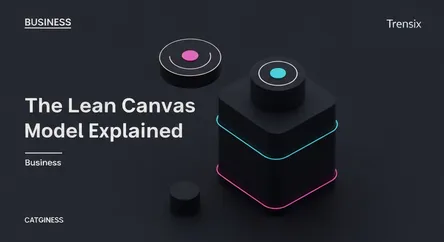Business
The Lean Canvas Model Explained

Discover the Lean Canvas, a one-page business plan for startups. Learn how this tool helps deconstruct ideas and validate assumptions quickly.
What is it?
The Lean Canvas is a one-page business plan template created by Ash Maurya that helps deconstruct a business idea into its key assumptions. It's an adaptation of the Business Model Canvas, but tailored for lean startups. Instead of focusing on traditional business components, it prioritizes a problem-solution approach. The canvas consists of nine blocks: Problem, Solution, Key Metrics, Unique Value Proposition, Unfair Advantage, Channels, Customer Segments, Cost Structure, and Revenue Streams. Its purpose is to provide a fast, effective, and portable way to map out a business model.
Why is it trending?
The Lean Canvas is popular because it aligns perfectly with the agile, fast-paced nature of modern startups. Traditional business plans are time-consuming and often become obsolete quickly. The Lean Canvas, however, is designed to be a dynamic document that evolves as the startup learns more about its customers and market. It encourages a focus on identifying and testing the riskiest assumptions first, saving valuable time and resources. This action-oriented approach helps entrepreneurs stay focused on what truly matters: building a sustainable business.
How does it affect people?
For entrepreneurs and startup teams, the Lean Canvas provides a structured framework for brainstorming and communication. It forces founders to think critically about the customer's problem before jumping to a solution. This customer-centric approach significantly increases the chances of achieving product-market fit. It empowers teams to iterate on their business model rapidly, pivot when necessary, and communicate their vision clearly to stakeholders, advisors, and potential investors. Ultimately, it helps people build better products by focusing on validated learning over static planning.